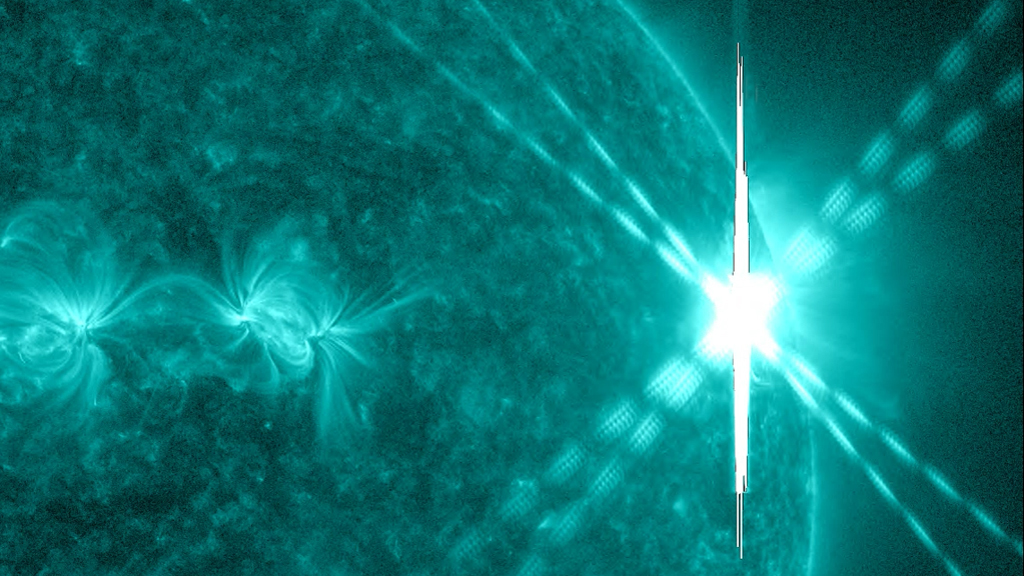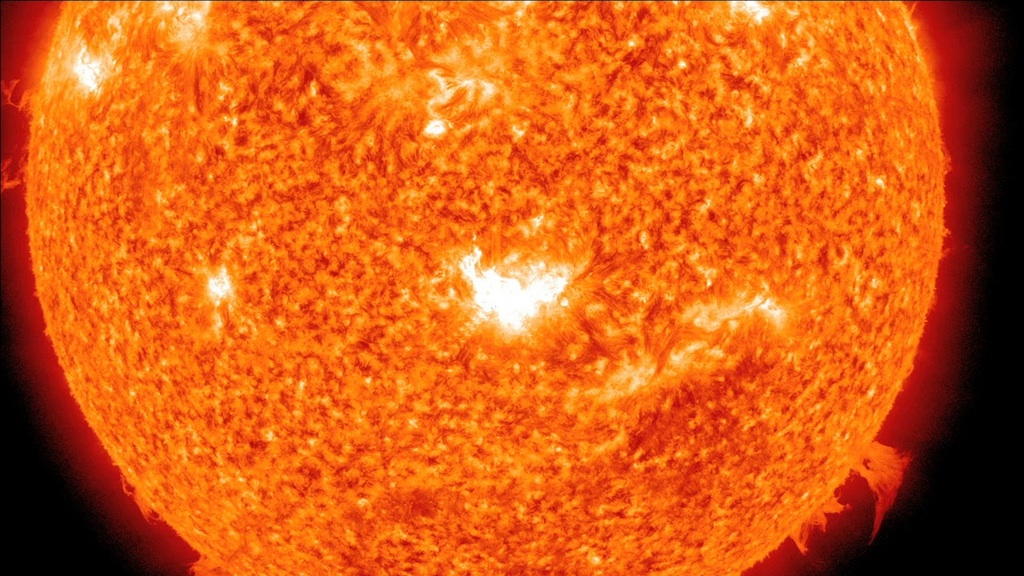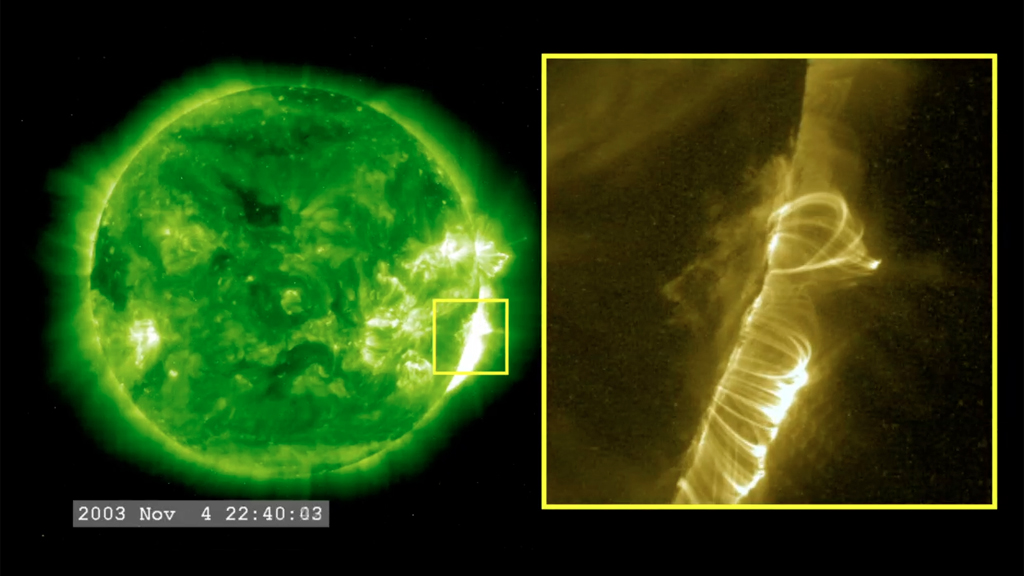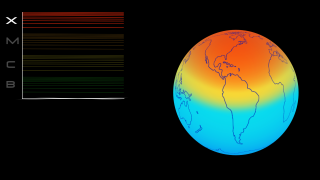Sun
ID: 10833

The largest explosions in the solar system get rewarded for their sheer brawn with a fitting, sci-fi-sounding name: X-class. Made visible to us by sun-observing satellites, these solar flares are awesome to watch. Loops of solar material—called plasma—leap off the sun's surface and expand to 10 times the size of Earth. The biggest flares can produce as much energy as a billion hydrogen bombs. Scientists categorize solar flares according to strength. The smallest ones are A-class, at near-background solar activity levels, followed by B, C, M, and X. Similar to the Richter scale for earthquakes, each letter represents a 10-fold increase in energy output. So an X is 10 times an M and 100 times a C. Within each letter class there is a finer scale from one to nine. Although X is the last letter, there are flares more than 10 times the power of an X1, so X-class flares can go higher than nine. As the sun approaches the peak of its 11-year cycle, expect more activity like the X6.9 flare on Aug. 9, 2011, seen above. Its brightness briefly overloaded satellite image sensors. Watch the videos below for footage of and a guide to these extreme solar phenomena.


What Does It Take To Be X-Class?



Related Story
For More Information
Story Credits
Lead Visualizer/Animator:
Scott Wiessinger (USRA)
Visualizers/Animators:
Walt Feimer (HTSI)
Chris Smith (HTSI)
Tom Bridgman (Global Science and Technology, Inc.)
Alex Kekesi (Global Science and Technology, Inc.)
Narrator:
Karen Fox (ADNET Systems, Inc.)
Producer:
Scott Wiessinger (USRA)
Lead Writer:
Karen Fox (ADNET Systems, Inc.)
Scott Wiessinger (USRA)
Visualizers/Animators:
Walt Feimer (HTSI)
Chris Smith (HTSI)
Tom Bridgman (Global Science and Technology, Inc.)
Alex Kekesi (Global Science and Technology, Inc.)
Narrator:
Karen Fox (ADNET Systems, Inc.)
Producer:
Scott Wiessinger (USRA)
Lead Writer:
Karen Fox (ADNET Systems, Inc.)
Please give credit for this item to:
NASA's Goddard Space Flight Center
NASA's Goddard Space Flight Center
Short URL to share this page:
https://svs.gsfc.nasa.gov/10833
Keywords:
DLESE >> Narrated
SVS >> App
NASA Science >> Sun
https://svs.gsfc.nasa.gov/10833
Keywords:
DLESE >> Narrated
SVS >> App
NASA Science >> Sun








